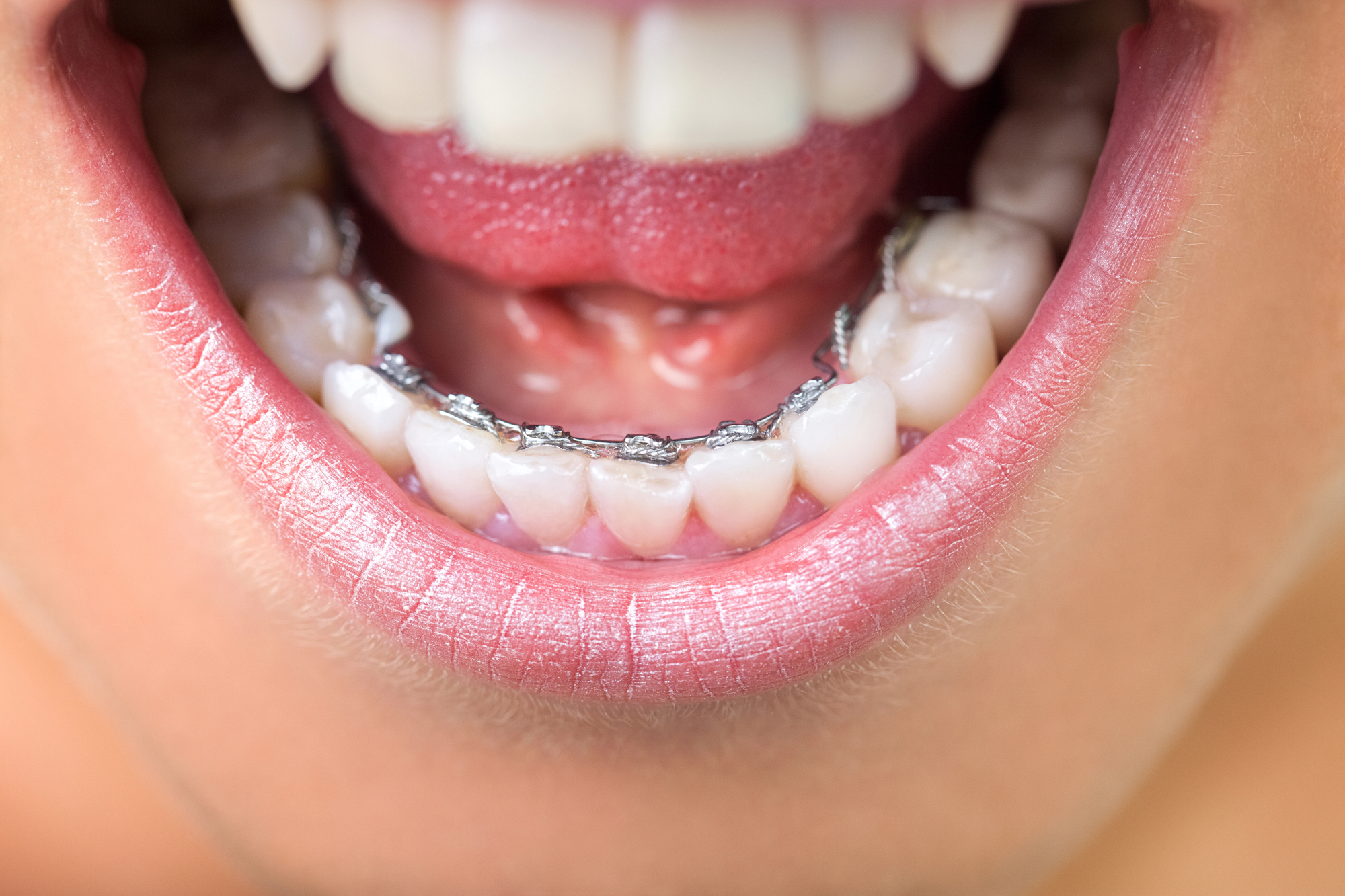Contents

Lingual Braces: The Truly Invisible Path to a Perfect Smile
Do you want to straighten your teeth without anyone noticing? Lingual braces might be the perfect solution for you! Placed on the inner surface of the teeth, they offer absolute discretion while effectively correcting most orthodontic problems. Discover everything you need to know about this innovative technique: its indications, its advantages and limitations, as well as its cost and possible alternatives.
Who is an Ideal Candidate for Lingual Braces?
Lingual braces are an excellent option for adults and teens who desire a completely invisible orthodontic treatment. They are particularly suited for professionals, performers, or anyone who feels self-conscious about the appearance of traditional braces. However, candidates must have teeth of sufficient size to provide enough surface area for bonding the brackets.
Thanks to technological advancements, lingual braces can now treat a wide range of complex cases, including:
- Severe crowding and spacing.
- Complex bite problems like overbites and underbites.
- Cases requiring extractions or preparation for other dental work.
The Unmatched Advantages of Lingual Braces
The primary benefit is 100% invisibility. Since the entire appliance is hidden behind your teeth, your treatment is a complete secret. This is a major advantage for patients in client-facing roles or those who simply do not want the aesthetics of their smile compromised during treatment.
Other key advantages include:
- High Effectiveness: They offer the same level of precision and power as traditional braces, making them suitable for even the most difficult cases.
- No Risk of Front-Surface Damage: Any potential decalcification (white spots) would occur on the back of the teeth, not the visible front surfaces.
The Unique Challenges of Lingual Orthodontics
Despite their benefits, lingual braces come with a distinct set of challenges:
- Tongue Irritation and Speech Issues: This is the biggest hurdle. The brackets can significantly irritate the tongue and cause a temporary lisp. While this improves over several weeks, the adjustment period can be difficult.
- Difficult Oral Hygiene: Brushing and flossing around brackets on the inside of your teeth is more challenging and requires meticulous attention.
- The Highest Cost: The custom manufacturing and specialized clinical skill required make lingual braces the most expensive orthodontic option.
- Longer Adjustment Appointments: The placement and adjustment of the wires are more technically demanding for the orthodontist, often resulting in longer appointments.
The Lingual Braces Treatment Process: A Step-by-Step Look
The process for getting lingual braces is highly precise:
- Consultation: An orthodontist specializing in lingual treatment will determine if you are a good candidate.
- Digital Scans and Impressions: Precise 3D scans of your teeth are taken.
- Custom Fabrication: These scans are used to custom-design and manufacture your individual brackets and wires in a dental lab. This process can take several weeks.
- Bonding Appointment: Your orthodontist will bond the custom brackets to the back of your teeth.
- Regular Adjustments: You will have follow-up appointments every 6-8 weeks to adjust the wires and monitor progress.
Best Practices for Living with Lingual Braces
To ensure a successful treatment, a few key habits are essential:
- Commit to a meticulous oral hygiene routine, using tools like interdental brushes and a water flosser.
- Avoid hard, sticky, and chewy foods that could damage your brackets.
- Use orthodontic wax liberally on any areas causing tongue irritation, especially in the beginning.
Conclusion: The Ultimate in Discreet Orthodontics
Lingual braces are the premier choice for patients seeking orthodontic correction with absolute discretion. Despite a higher cost and a more challenging adjustment period, they deliver results as effective as traditional braces without any aesthetic compromise. A consultation with an orthodontist experienced in lingual techniques is the best way to determine if this advanced solution is the right fit for your smile journey.
FAQ: Your Top Questions About Lingual Braces
The pain from tooth movement is similar. However, lingual braces are known for causing significant tongue irritation and soreness, whereas traditional braces irritate the cheeks and lips. The adjustment period for the tongue can be more challenging for some patients.
A temporary lisp is very common and expected. For most patients, speech returns to normal within two to four weeks as the tongue adapts to the presence of the brackets. Practicing speaking and reading aloud can help speed up this adjustment.
This is a personal decision. If 100% invisibility is your top priority and you have a complex case that may not be suitable for clear aligners, then yes, they are often considered worth it. For those where budget is a primary concern or who find the idea of tongue irritation daunting, other options like clear aligners or ceramic braces may be a better fit.
Most people who are candidates for traditional braces are also candidates for lingual braces. However, patients with very small teeth may not have enough surface area on the back to bond the brackets. Additionally, patients with a very deep overbite may not be ideal candidates, as the bite forces could put too much pressure on the lower lingual brackets. An experienced orthodontist can determine your suitability.
